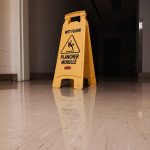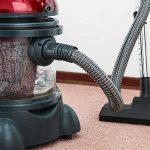Key Considerations for Industrial Air Compressor Installation
In planning any industrial air compressor installation, selecting a location with sufficient ventilation, level flooring, and easy access for maintenance needs to be your top priority. Ensuring that the ground can support the weight and absorb vibrations greatly enhances both reliability and noise control. Compliance with installation safety guidelines such as securing lock-out tag-out electrical connections and testing all protective devices reduces operational hazards from the very start.
Have you seen this : Essential guide to commercial cleaning in London for businesses
Every high-performance compressed air system requires thoughtful site preparation. Laying a solid concrete pad, confirming stable ambient temperature, and assessing utility access are crucial steps. Dedicated circuits for power—with proper amperage, phase, and grounding—prevent costly overloads or equipment failures. Before connecting ducting and piping, optimize the compressed air system layout so all hoses and valves remain accessible, minimizing disruption during routine inspections or repairs.
Regulatory compliance demands permitting, system testing, and documenting all electrical and mechanical checks. Review inspection points such as fuse ratings, safety valve settings, and airflow clearances to avoid installation pitfalls. For an authoritative resource, this page explains it in detail: industrial air compressor installation.
Also to read : Transform your events with photo booth rental in connecticut
Step-by-Step Compressor Installation Process
Pre-installation checklist: assessing air demand, selecting compressor type, and verifying site requirements
Start the compressor installation process by calculating total air demand, typically in CFM, to ensure proper compressor sizing and capacity. This directly affects overall operational efficiency. For industrial compressor types—rotary screw compressors or reciprocating compressors—match the model to required performance and duty cycles. Before equipment arrives, verify site requirements: is the dedicated circuit prepped for the expected electrical connections for compressors? Check compressed air system layout to guarantee clear access around all units and optimal airflow for future maintenance.
Planning system layout, foundation setup, and proper anchoring methods
Effective compressed air system layout minimizes pressure drops and energy loss. Prepare a foundation that meets load demands—concrete pads are standard. Compressor anchoring techniques, such as using vibration isolation pads, are essential for stability and reducing wear. Accurately mark out anchor points for rotary screw compressors and reciprocating compressors according to manufacturer instructions. Ensure space for necessary air receiver tanks installation, planning enough room for safe walkway and service access.
Integrating air receiver tanks, establishing electrical connections, and configuring system controls
Air receiver tanks installation is crucial for balancing demand fluctuations and maintaining steady pressure. Position tanks close but accessible for drainage and inspection tasks. Electrical connections for compressors require strict adherence to installation safety guidelines; use lock-out tag-out switches, ensure circuits are properly rated, and integrate protective devices. Complete the compressor installation process by implementing control system integration, setting up safety valves, and bench-testing system shutdown protocols to enhance compressed air system layout and operational safety.
Ensuring Safety, Quality, and Efficiency
Implementing robust installation safety guidelines is the first priority when setting up an industrial air compressor. All personnel must follow safety protocols: use lock-out tag-out procedures, install safety valves, and conduct system pressure testing before commissioning. Ensuring ventilation and strong air quality considerations is essential; proper airflow prevents overheating and preserves both equipment and operator safety. Installation teams should integrate compressed air filtration installation to block dust and debris, directly enhancing system performance and system reliability.
Addressing leak prevention and noise reduction during installation comes next. All joints, hoses, and piping should be tested for leaks with soapy water or electronic sensors, as leak detection methods are vital for compressor efficiency improvement. Fitting high-quality pipework and using vibration pads or sound insulation can significantly reduce noise levels and pressure drops. These steps also form part of the compressor installation checklist, streamlining documentation for future maintenance.
For final commissioning industrial compressors, integrate the unit with monitoring systems such as remote alerts and performance dashboards. Careful scheduling of regular inspections post-installation—like filter changes and condensate drainage—lays the groundwork for long-term maintenance planning. This approach ensures compressor operational efficiency and compliance with environmental regulations, maximizing equipment lifespan while curbing unscheduled downtime.
Expert Insights, Cost Factors, and Service Provider Selection
Professional compressor installers should demonstrate extensive experience and up-to-date training in modern industrial air compressor setup. Verifiable expertise includes certification for handling high-voltage electrical connections for compressors, proficiency in commissioning industrial compressors, and a deep understanding of compressed air system layout. It’s essential to review their track record, ensuring successful case studies for compressor installation and familiarity with different industrial compressor manufacturers.
Avoiding common installation errors is a hallmark of quality expert guide for installation services. Mistakes such as poor foundation requirements for compressors or neglected air quality considerations can lead to leaks and safety issues. Installers must follow a comprehensive air compressor installation checklist, apply stringent safety protocols for installation teams, and include compressor warranty considerations in the documentation. Troubleshooting guides from service providers help diagnose issues, like pressure drop or compressed air leaks prevention, while supporting compressor efficiency improvement and warranty compliance.
Cost estimation for installation should reflect labour, piping and ducting installation, commissioning industrial compressors, and compressor system testing. Leading professional compressor installers clarify project milestones, the compressor installation timeline, and available post-installation service packages. Reputable providers, referenced in expert guide for installation services, supply parts from established industrial compressor manufacturers, enhancing reliability and operational lifespan.











